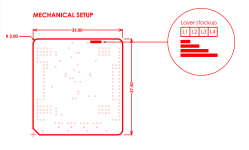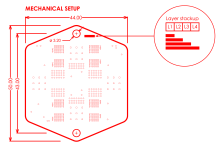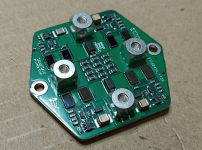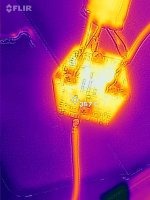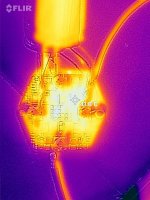Saligny Universal is currently available for +/-40Vdc output.
+/-55Vdc will be available at the end of May.
+/-55Vdc will be available at the end of May.
Yes, the price is the same.
The difference is that at low voltage +/-20Vdc Saligny Universal will perform better than on +/-55Vdc. Based on your final application, a low voltage Saligny Universal will bring more peformance.
For the time been only +/-40Vdc is available.
The difference is that at low voltage +/-20Vdc Saligny Universal will perform better than on +/-55Vdc. Based on your final application, a low voltage Saligny Universal will bring more peformance.
For the time been only +/-40Vdc is available.
Last edited:
@Zoji6645
Saligny HVHF MKIII may work up to +/- 225Vdc and is currently available.
Saligny Power GaN will work up to +/-95Vdc and will be available at the end of May - starting of June.
Saligny Universal may be adjusted to support higher voltages, but as I previously mentioned, higher voltage mean mosfet with higher Rdson at a considerably higher price.
Saligny HVHF MKIII may work up to +/- 225Vdc and is currently available.
Saligny Power GaN will work up to +/-95Vdc and will be available at the end of May - starting of June.
Saligny Universal may be adjusted to support higher voltages, but as I previously mentioned, higher voltage mean mosfet with higher Rdson at a considerably higher price.
@iTiberius
Can you provide the dimensions of the new Saligny Universal unit and also the new Saligny Power GaN?
I am sure you are working on the datasheets ;-)
Thanks,
Anand.
Can you provide the dimensions of the new Saligny Universal unit and also the new Saligny Power GaN?
I am sure you are working on the datasheets ;-)
Thanks,
Anand.
@iTiberius I heard that different mosfets in active rectifier also affect sound. Could you please educate me about how different mosfets in LT4320 active rectifier affect sound? Are some mosfets that add more fuller bass, fuller bodied vocals that can be heard in sound when using different mosfets or GaN-s? Plan is to use it in soundcard, DAC that is using 1.5 ampers.
So what mosfet parameters are affecting the sound when using active LT4320 rectifier? Is it mosfets Rds on, Qg, Vgs th, Ciss, Crss, Coss or rg or?
I like to get more bass and fuller bodied vocals.
So what mosfet parameters are affecting the sound when using active LT4320 rectifier? Is it mosfets Rds on, Qg, Vgs th, Ciss, Crss, Coss or rg or?
I like to get more bass and fuller bodied vocals.
When replacing an existing bridge, do we have also to remove the ceramic nF capacitors that were with the silicon diodes?Yes, the price is the same.
The difference is that at low voltage +/-20Vdc Saligny Universal will perform better than on +/-55Vdc. Based on your final application, a low voltage Saligny Universal will bring more peformance.
For the time been only +/-40Vdc is available.
Thanks.
- Home
- Vendor's Bazaar
- Interest for best synchronous rectifier in the world, probably!
